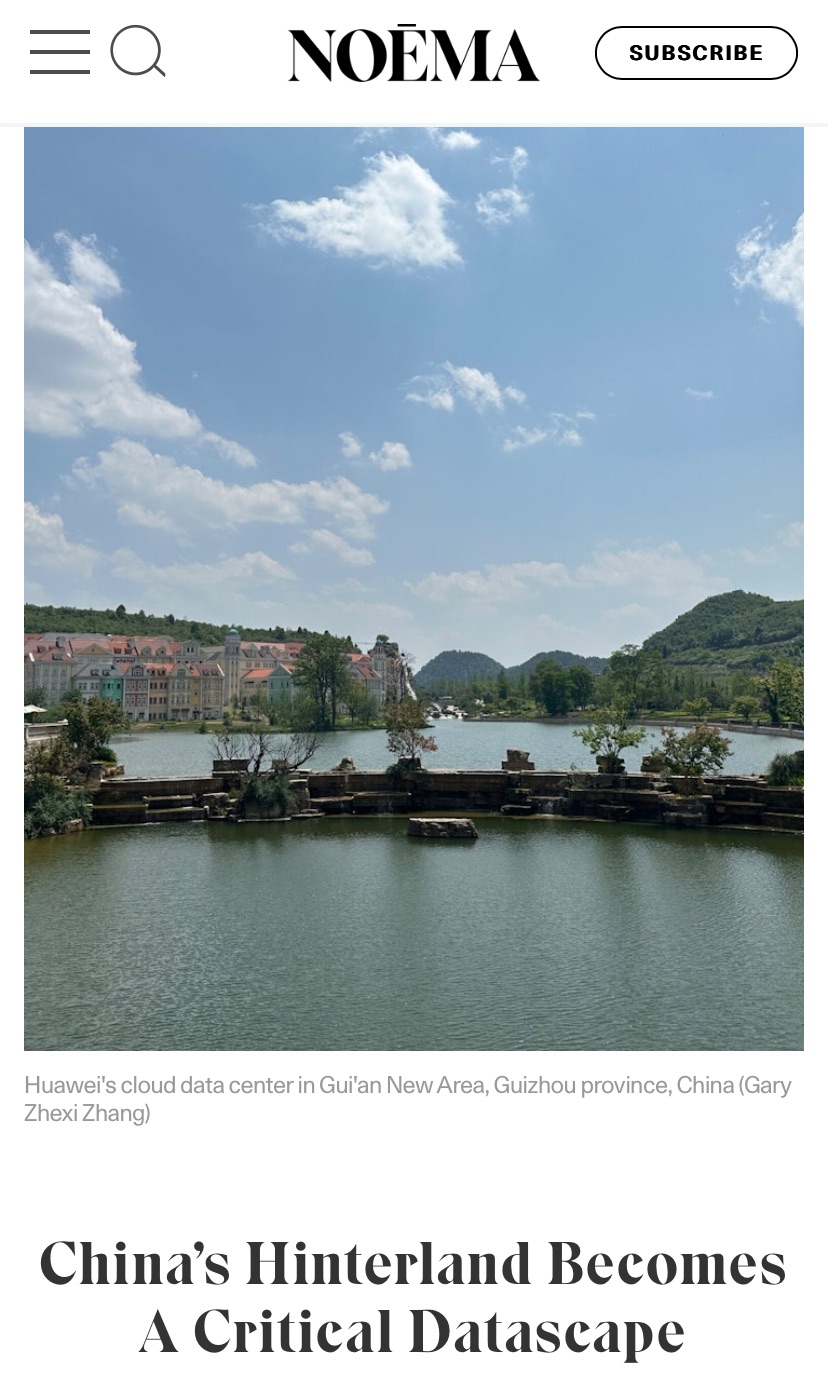
Noema magazine features a piece on how Guizhou, a former underdeveloped hinterland province, is linked to the global circulation of data and people. In the Gui’an New Area, Huawei has built a vast data center in a ‘18th century European city’ style.
Theme-park European architecture is nothing new in 21st-century China, nor in Gui’an New Area, which already offers a Swiss-style scenic village as a nearby tourist attraction. However, look more closely at the buildings in the new Czech town and you’ll notice that their windows are in fact air vents, thrumming and heaving with the high-pitched rush of server racks and cooling fans. The water tumbling down the artificial cliffside and circulating in the moat is part of a cooling system for transferring heat away from the machinery. This is Huawei’s new Cloud Data Center, which follows the company’s tradition of building its Chinese campuses in a range of historic European styles
This data center is part of efforts by the central Chinese government to transform Gui’an New Area in formerly disconnected provinces like Guizhou into a “Big Data Valley”, which in turn fits in grander visions of Sinofuturity.
Why do I find this interesting? First of all I find it intriguing how a mediatized ‘imagology’ of European urbanism is mobilized. As a simulacrum, is it an attempt to mask the friction between a high-tech connected data industry and the rural peripheral character of the hitherto disconnected landscape and province, by deliberately inserting an urban archetype that is both out-of-place and out-of-time? Or is it a sardonic relegation of euro-centric techno-modernity to the past and in doing so indeed displaying the rising power of sinofuturity?
Second, new digital infrastructures like these are coming to shape urban/rural environments all over the world, blurring any neat distinction between the two. This prompts new questions about what contributes urbanism beyond the city today, and also beyond the western-dominated theorizing of urban culture with classical concepts like publicness, public space, civicness, pedagogics and tolerance of differences, encountering strangers, and so on.
Third, cases like these highlight new types of ‘infrastructural exclusion’, allowing some to benefit from (access to) global media networks while pushing others out. The notion of ‘infrastructure’ has been conceptualized as “the connective tissue that knits people, places, social institutions and the natural environment into coherent urban relations” (Graham and
Marvin 2001). What is holding together the various actors and actants in this new type of complex urban assemblage? How is a purely technical understanding of connectivity also creating new kinds of disconnections and exclusionary practices?